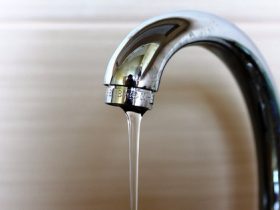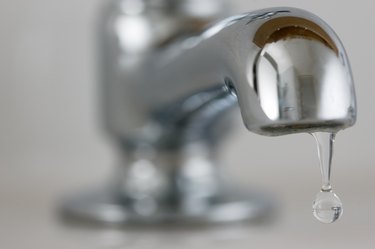Here underneath you might get additional quality information relating to 9 Reasons for Low Water Pressure in Your House.

Low water stress in your home can be a discouraging trouble, affecting every little thing from bathing to washing recipes. If you're experiencing weak water circulation, there are several possible reasons and remedies to discover. In this guide, we'll talk about typical reasons for low tide stress and useful steps to address the concern properly.
Introduction to Low Tide Pressure
Low tide stress happens when the flow of water from your taps, showers, and other fixtures is weak than typical. This can make daily jobs a lot more tough and much less reliable. Recognizing the causes of low tide stress is important to discovering the appropriate remedy.
Usual Root Causes Of Low Water Stress
Pipe Obstructions
Gradually, pipelines can become blocked with natural resource, debris, or debris, restricting the circulation of water. This is a typical concern in older homes with galvanized steel pipelines.
Corrosion
Rust within pipes can cause leakages and decreased water pressure. Rust accumulation can tighten water circulation, specifically in aging plumbing systems.
Faulty Stress Regulatory Authorities
Stress regulators are in charge of maintaining consistent water stress in your house. If they malfunction, it can lead to low tide stress or irregular circulation throughout the house.
Municipal Water System Issues
Occasionally, the trouble exists outside your home. Metropolitan water supply issues, such as main line leakages or upkeep work, can temporarily lower water pressure in your area.
Just How to Detect Low Tide Pressure
Examining Faucets and Components
Begin by testing the water stress at various taps and components throughout your home. If the concern is separated to details areas, it may show local problems.
Evaluating Pipelines
Inspect visible pipelines for signs of leaks, deterioration, or obstructions. Take notice of any unusual audios, such as banging or rattling pipes, which can indicate problems within the plumbing system.
Consulting with a Plumber
If you're unable to identify the reason for low water pressure, think about working with a specialist plumber to perform an extensive evaluation. They can recognize underlying problems and suggest proper services.
Do It Yourself Solutions to Repair Low Water Stress
Cleaning Aerators and Showerheads
Natural resources can build up in aerators and showerheads, reducing water flow. Eliminate and clean up these components consistently to enhance water pressure.
Flushing Water Heater
Sediment build-up in the hot water heater can restrict circulation and lower performance. Flushing the storage tank occasionally assists get rid of sediment and keep optimum performance.
Checking Pressure Regulatory Authority
Make certain that the stress regulatory authority is operating properly. Changing or replacing the regulatory authority can help restore appropriate water pressure throughout your home.
Clearing Clogs in Pipeline
For small clogs, try utilizing a plumbing snake or chemical drainpipe cleaner to clear blockages in pipes. Beware when utilizing chemicals and comply with safety and security standards.
When to Call a Professional Plumber
If DIY initiatives fall short to settle the concern or if you believe considerable plumbing problems, it's finest to look for assistance from a licensed plumber. They have the knowledge and tools to deal with complicated issues securely and properly.
Safety Nets to Keep Water Stress
Normal Upkeep
Arrange routine maintenance for your plumbing system to prevent problems such as corrosion, leakages, and clogs. Attending to minor issues early can aid stay clear of more significant repair work in the future.
Installing a Stress Booster
Take into consideration installing a stress booster pump to boost water stress in areas with regularly low flow. This can be particularly helpful for multi-story homes or buildings with high-demand components.
Monitoring Water Usage
Bear in mind water use behaviors and prevent overtaxing the plumbing system. Basic modifications, such as shocking showers and washing lots, can assist preserve adequate water pressure.
Conclusion
Dealing with low tide pressure can be frustrating, however identifying the underlying causes and carrying out appropriate remedies can bring back optimum circulation throughout your home. Whether it's cleaning aerators, checking pipes, or talking to a plumber, taking proactive actions can make certain a steady supply of water for your daily demands.
FOUR WAYS TO FIX LOW WATER PRESSURE NOW
Turning on a shower or faucet only to find the water comes out in a sad, slow drizzle is never a good feeling. How exactly are you supposed to wash a pan or take a quick shower when it takes 10 minutes just to rinse off a little soap? The good news is that when your water pressure is bad, there's always a cause: typically one that can be easily fixed. Here are some of the most common causes of low pressure and what you can do to fix the issue:
DEBRIS AND MINERAL DEPOSIT BUILDUPS
If you notice low water pressure from just one or two of the fixtures in your house, the problem likely has to do with debris buildup. Water is full of minerals and other debris, all of which can accumulate in your pipes and on your fixtures. This can cause a blockage that affects how much water flows through. To fix this, try filling a small plastic bag with white vinegar, and use a rubber band to hang it around your showerhead or faucet. Let the head of the fixture soak for a few hours, and the vinegar should loosen the deposits.
WATER LEAKS
Leaks are another common cause of low water pressure. If water is flowing out of your plumbing through a hole or crack before it can reach your fixture, the pressure coming out of the faucet or showerhead will be lower. A plumbing professional is your best bet for finding and repairing a leak in your water supply pipes.
Leaks are another common cause of low water pressure. If water is flowing out of your plumbing through a hole or crack before it can reach your fixture, the pressure coming out of the faucet or showerhead will be lower. A plumbing professional is your best bet for finding and repairing a leak in your water supply pipes.
A VALVE ISSUE
If you have low water pressure throughout your home, check your main shut-off valve to make sure it's completely open. You may also want to see if there's a pressure-reducing valve installed. If there is, have a plumber help you adjust the settings to get the pressure you're looking for.
OTHERS USING WATER
Believe it or not, your low water pressure could be caused by your neighbors. If you notice low pressure at certain times of day, it may be because you and the people living next to you have similar schedules - when everyone is showering at the same time, the pressure will be lower in every home. Low pressure throughout the neighborhood may also be caused by an issue with your municipal water supply. If that's the case, call the supplier to see if they're working on the issue.
https://www.rotorooter.com/blog/water-leaking/low-water-pressure-fixes/

As an avid reader about Low Water Pressure in the House?, I was thinking sharing that piece of content was a smart idea. Sharing is nice. You just don't know, you may very well be helping someone out. Thanks a lot for taking the time to read it.
Click Here
Comments on “My In-Depth Advice to Managing Low Water Pressure in Your Home”